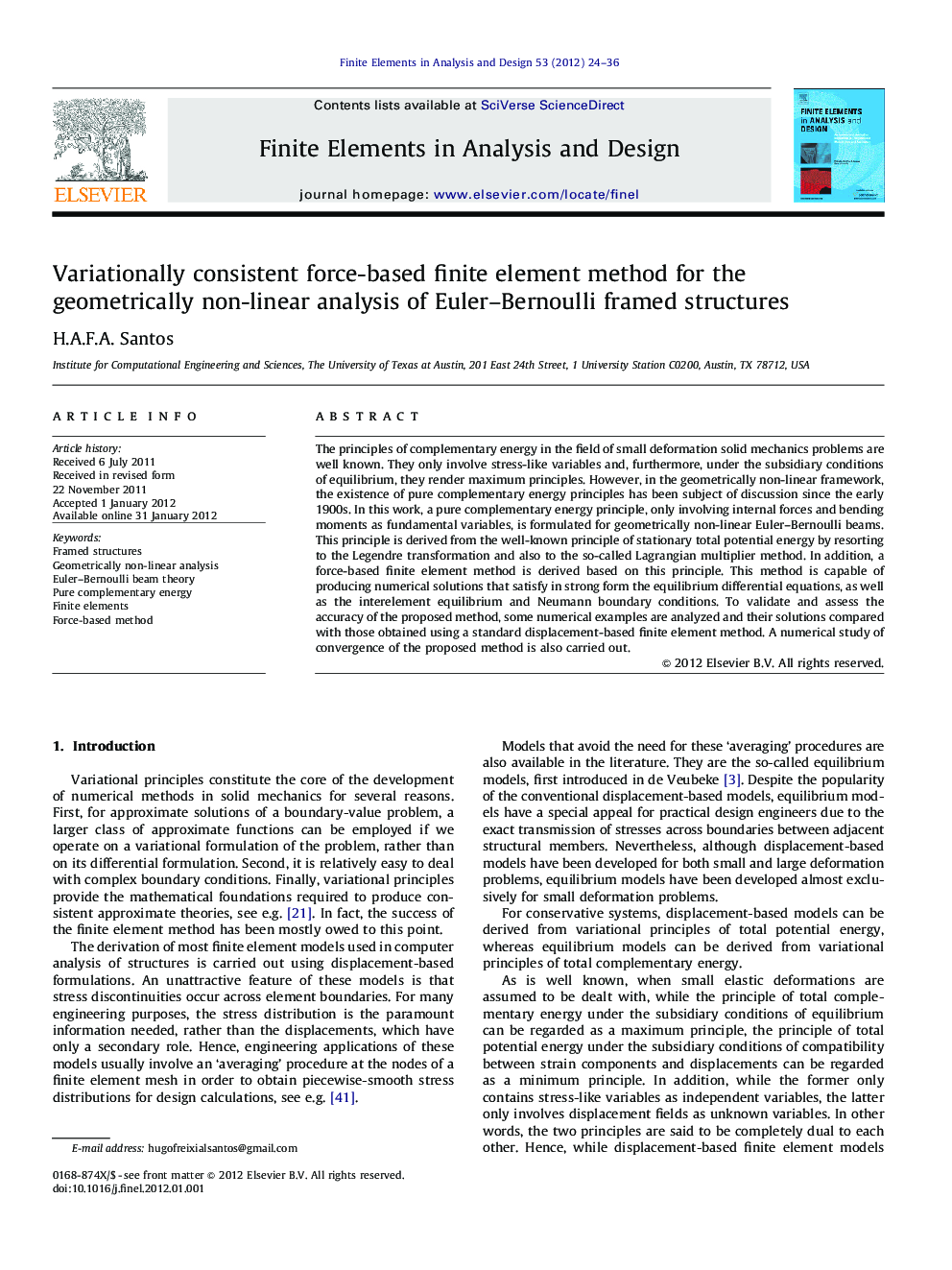| Article ID | Journal | Published Year | Pages | File Type |
|---|---|---|---|---|
| 514604 | Finite Elements in Analysis and Design | 2012 | 13 Pages |
The principles of complementary energy in the field of small deformation solid mechanics problems are well known. They only involve stress-like variables and, furthermore, under the subsidiary conditions of equilibrium, they render maximum principles. However, in the geometrically non-linear framework, the existence of pure complementary energy principles has been subject of discussion since the early 1900s. In this work, a pure complementary energy principle, only involving internal forces and bending moments as fundamental variables, is formulated for geometrically non-linear Euler–Bernoulli beams. This principle is derived from the well-known principle of stationary total potential energy by resorting to the Legendre transformation and also to the so-called Lagrangian multiplier method. In addition, a force-based finite element method is derived based on this principle. This method is capable of producing numerical solutions that satisfy in strong form the equilibrium differential equations, as well as the interelement equilibrium and Neumann boundary conditions. To validate and assess the accuracy of the proposed method, some numerical examples are analyzed and their solutions compared with those obtained using a standard displacement-based finite element method. A numerical study of convergence of the proposed method is also carried out.
► A pure complementary energy principle for geometrically nonlinear Euler–Bernoulli beams is introduced. ► As fundamental unknowns, the principle only involves force-like variables. ► A force-based finite element method for the analysis of framed structures is developed. ► The new finite element method provides statically admissible solutions. ► The proposed method proved to be a competitive alternative to the standard displacement-based method.
